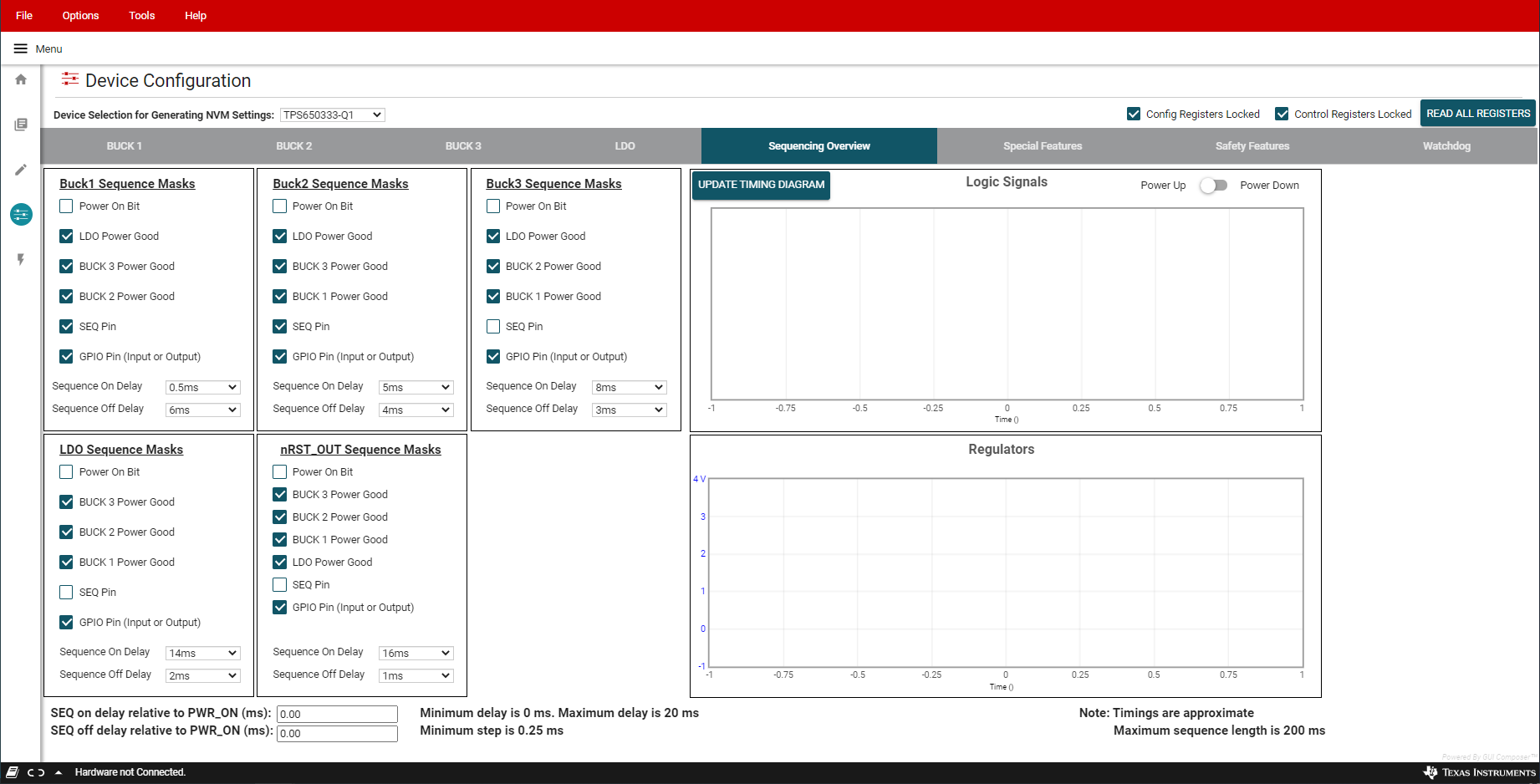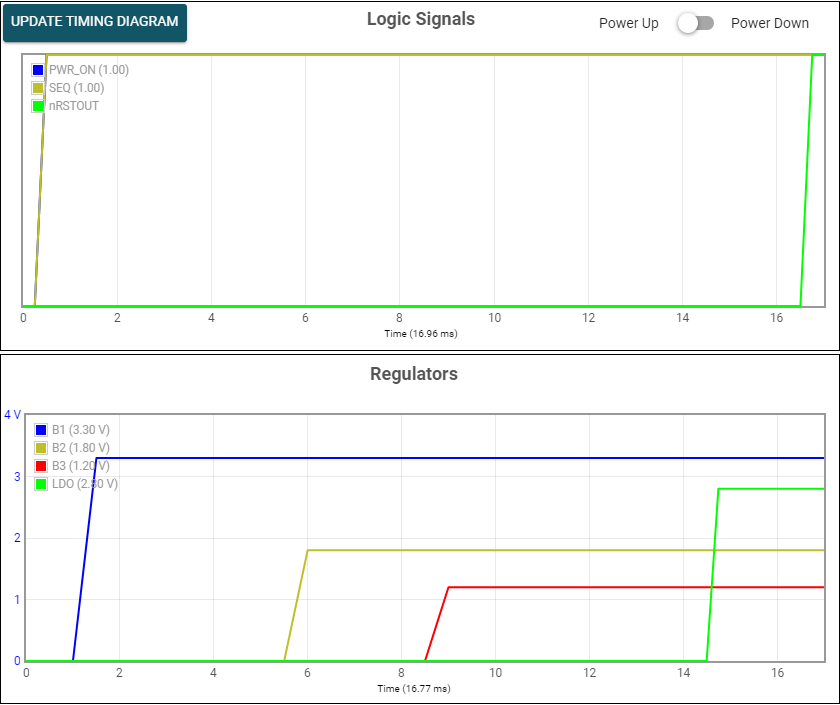SLVUC06 October 2020 TPS650320-Q1
- Trademarks
- 1Introduction
- 2EVM Configurations
- 3Test Points
- 4Graphical User Interface
- 5Typical Performance Plots
- 6TPS650320-Q1 EVM Schematic
- 7TPS650320-Q1 EVM PCB Layers
- 8TPS650320-Q1 EVM Bill of Materials
4.2.4.2 Configuring the Power Sequence
The Sequencing Overview tab includes instruments to customize the power sequence of the PMIC. Note that the check boxes are power sequence masks. If a particular logic signal needs to be included as part of the regulator or logic power up sequence, leave the box next to the logic signal unchecked. TI recommends to set Power On Bit unmasked for each rail that is required in the application.
 Figure 4-10 Sequencing
Overview Tab
Figure 4-10 Sequencing
Overview Tab Figure 4-11 GUI Generated
Timing Diagram
Figure 4-11 GUI Generated
Timing Diagram